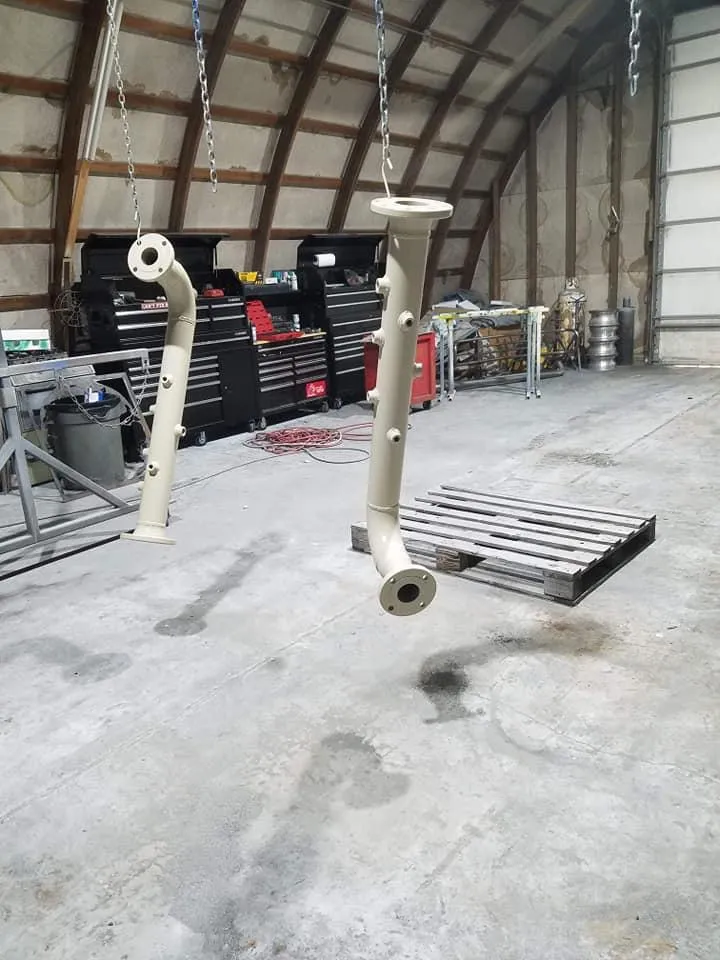blog

Preventing Pipeline Failures with On-Site Welding & Repairs
Introduction
Pipelines on industrial sites, ranches, and agricultural operations near Casper move fuel, water, slurry, feed, and hydraulic fluids every day. When a pipeline joint fails, cracks, or begins to leak, it can cause product loss, equipment downtime, environmental impact, and costly cleanup. On-site welding allows repairs to happen quickly and safely, keeping systems running with minimal interruption.
Why Pipeline Failures Occur
Pipelines fail for many reasons, and understanding the causes helps prevent recurring issues. Common stressors include temperature changes, vibration from pumps and equipment, ground shift, corrosion, and wear at bends or joints. When multiple pressures act on a welded seam, even a small flaw can grow into a leak or fracture if not addressed early.
The Role of On-Site Welding in Pipeline Maintenance
On-site welding allows repairs to be made exactly where failure occurs, without removing entire pipe sections. This approach reduces downtime, avoids unnecessary disassembly, and ensures that alignment, slope, and flow direction remain consistent. The welder can match the repair to real-world operating conditions rather than working in a controlled shop environment that does not reflect field stress.
When Mobile Welding Makes the Most Impact
Not every repair requires pulling pipe or shutting down a large area. On-site welding is most beneficial when access and continuity matter.
• Emergency leak repairs that need immediate control
• Reinforcing older welds showing wear or cracking
• Replacing sections damaged by corrosion or abrasion
• Repairing fittings that loosen under pressure or vibration
• Adjusting pipeline runs during system upgrades or rerouting
Types of Pipeline Weld Repairs
Different repair methods apply depending on how the pipeline has failed. Each approach addresses a specific failure mode.
Crack Repair and Stop-Weld
Small cracks are ground out and re-welded to prevent propagation.
Patch or Insert Plate Reinforcement
A plate is welded over a worn area to strengthen walls without full pipe replacement.
Section Cut-Out and Replacement
Damaged areas are removed and replaced with new pipe, ensuring full restoration.
Joint Reweld or Realignment
Failing welds are re-prepped, re-aligned, and re-welded to restore structural integrity.
Steps to Ensure a Strong and Safe Pipeline Weld
Successful pipeline repair requires systematic preparation and follow-through. The steps below outline the process.
Identify the cause of failure rather than only repairing the symptom
Prepare the pipe surface by removing rust, coatings, scale, or contamination
Secure alignment and maintain proper spacing before welding
Select filler metals compatible with the existing pipe material
Inspect the weld visually and, if necessary, with non-destructive testing methods
Recoat or wrap the pipe for corrosion protection before returning to service
Working Conditions That Influence Repair Quality
Wyoming wind, cold air temperature, and moisture affect pipeline welding outcomes. Preheating the pipe helps reduce cracking risk, shields can block wind on open ground sites, and controlled cooling prevents stress fractures. In remote areas, mobile welders must bring the right tools, power supply, and protective equipment to ensure consistent weld quality.
Benefits of On-Site Welding for Pipeline Systems
On-site welding provides both functional and long-term value. These advantages extend beyond just fixing the immediate break.
• Reduced downtime due to immediate repair response
• Lower labor and hauling costs compared to shop work
• Repairs align with actual pipe load, slope, and ground conditions
• Reinforcement can be applied proactively to extend pipeline life
• Less disruption to production, livestock, irrigation, or facility operation
Frequently Asked Questions
How soon should a pipeline leak be addressed?
Immediately. Delays increase pressure loss, corrosion, contamination, and cleanup risk.
Do pipeline repairs always require shutting down the entire line?
Not always. Depending on pressure and flow, isolation valves or temporary bypasses may allow partial operation during repair.
What if corrosion is widespread instead of localized?
Widespread corrosion may require larger section replacements or protective coating upgrades rather than spot repair.
Can on-site welding handle high-pressure pipeline repair?
Yes, when performed by qualified welders using proper procedure and inspection steps.
How can I prevent recurring pipeline failures?
Routine inspection, timely maintenance, and reinforcing high-stress areas before failure occurs significantly extend pipeline service life.
Conclusion
Pipelines work under constant load and environmental stress. On-site welding ensures repairs match real operating conditions, restore strength quickly, and prevent small failures from turning into expensive downtime. With the right preparation and reinforcement strategy, pipeline systems in Casper can remain dependable and cost-efficient for years.
Our Services
Helpful Links
Contact Information
5734 W Old Yellowstone Hwy Casper WY 82604
Business Hours
Mon - Sun 8:00 am - 5:00 pm
with 24/7 call-out services
© 2025 All Rights Reserved | Frontier Welding & Fabrication, LLC
